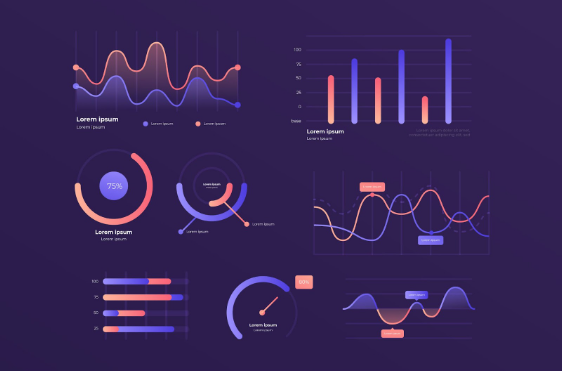Development of a hybrid solution to be able to detect swimming pools in different regions
Tag: data
Big data and the traps of spurious correlations
In Spain, it is estimated that around 68% of industrial companies are considered "digital novices" or "digital followers", which indicates that they have not yet fully adopted digitalization in their businesses and need to do so to improve their competitiveness. When analyzing large data sets, we warn against finding spurious correlations, where variables may appear related without having real meaning or where a third variable could be influencing them. Therefore, it is essential to interpret the data with caution, remembering that correlation does not imply causation, and to be aware of how graphs and visualizations are constructed to avoid erroneous conclusions.
Tourism and big data: for each other
Massive data management has become a crucial ally to improve the offer of tourism services and facilitate the recovery of the industry after the pandemic. The use of Big Data and management tools allows tourism companies to take advantage of data as raw material to develop effective strategies and gain a competitive advantage. The precise and holistic collection of data, from the origin to the preferences and behaviors of tourists, makes it possible to predict future needs and personalize services. In addition, the ability to share and combine data between different entities and organizations provides a more complete picture of tourists and facilitates agile decision making and the development of adapted products and services.
SMEs and Big Data: 4 axes to start 2023 with a solid data strategy
The majority of Spanish SMEs trust in digitalization and plan to invest in it in the next three years, however, they still need to carry out a digital transformation focused on the efficient management of large volumes of data. Using Big Data strategies can help these companies proactively address problems, generate new opportunities, improve operational efficiency, and build customer loyalty. However, SMEs face challenges such as the integration of different data sources and types, the need to process large volumes of data quickly, and the proper selection and preparation of data. To succeed in a Big Data strategy, SMEs must clearly define business problems, select and prepare the right data, store it securely, and perform extensive analysis to make data-driven decisions. The beginning of a new year is an opportune time to implement digital transformation and Big Data strategies, which requires a change in mentality and strategic focus in these companies.
Data policy: owning your information as the key to the process
Data science strategies are increasingly used by Spanish companies, with a positive impact on organizational performance and higher levels of resilience. It is essential that companies own their data and ensure its quality, and that they adopt a data-driven approach to make strategic decisions based on data analysis and interpretation. Proprietary data management provides flexibility and capacity to address present and future business needs, but requires a data governance policy and adequate attention to data integration, quality, and management.
Data as a motor for a new robotics
Compared to other fields, robotics has particular characteristics, because it aims to allow a physical agent to interact with the concrete world.
HSBC
Zentricx, was summoned by HSBC Bank, based on their optimization needs. Requested the installation and implementation of Viya®, in order to obtain the capabilities provided in the Machine Learning models.
How to choose the most appropriate type of graph?
When visualizing data, it is important to consider the objective and adapt the graph to the desired storytelling. The audience to which the results will be displayed also influences the choice of chart type. The size and type of data, as well as the relationship between the variables, also determine which type of graph is most appropriate. It is recommended that you experiment with different charts and use multiple charts to maintain clarity and show comparisons, trends, and relationships between variables.
What industrial revolution is your company in today?
The Fourth Industrial Revolution poses challenges for companies. Although digitalization forced by the pandemic has paved the way, there is still a long way to go. The adoption of Data Intelligence and Big Data tools is low in Spain, and many companies lack a consistent data strategy. Successful transformation requires a comprehensive business strategy change and the ability to anticipate disruptions.
Are there differences between a CRM and a CDP?
Both CRM and CDP technologies are valuable tools, but for different purposes. While CRMs focus on managing customer interactions, CDPs focus on collecting and understanding customer behavior data. The choice depends on the specific needs of each company and sales and service oriented roles can benefit more from a CRM, while customer management strategy oriented roles can take better advantage of a CDP. Ultimately, it's important to assess what kind of information is needed and how it will be used to make more informed business decisions and deliver personalized customer experiences.











